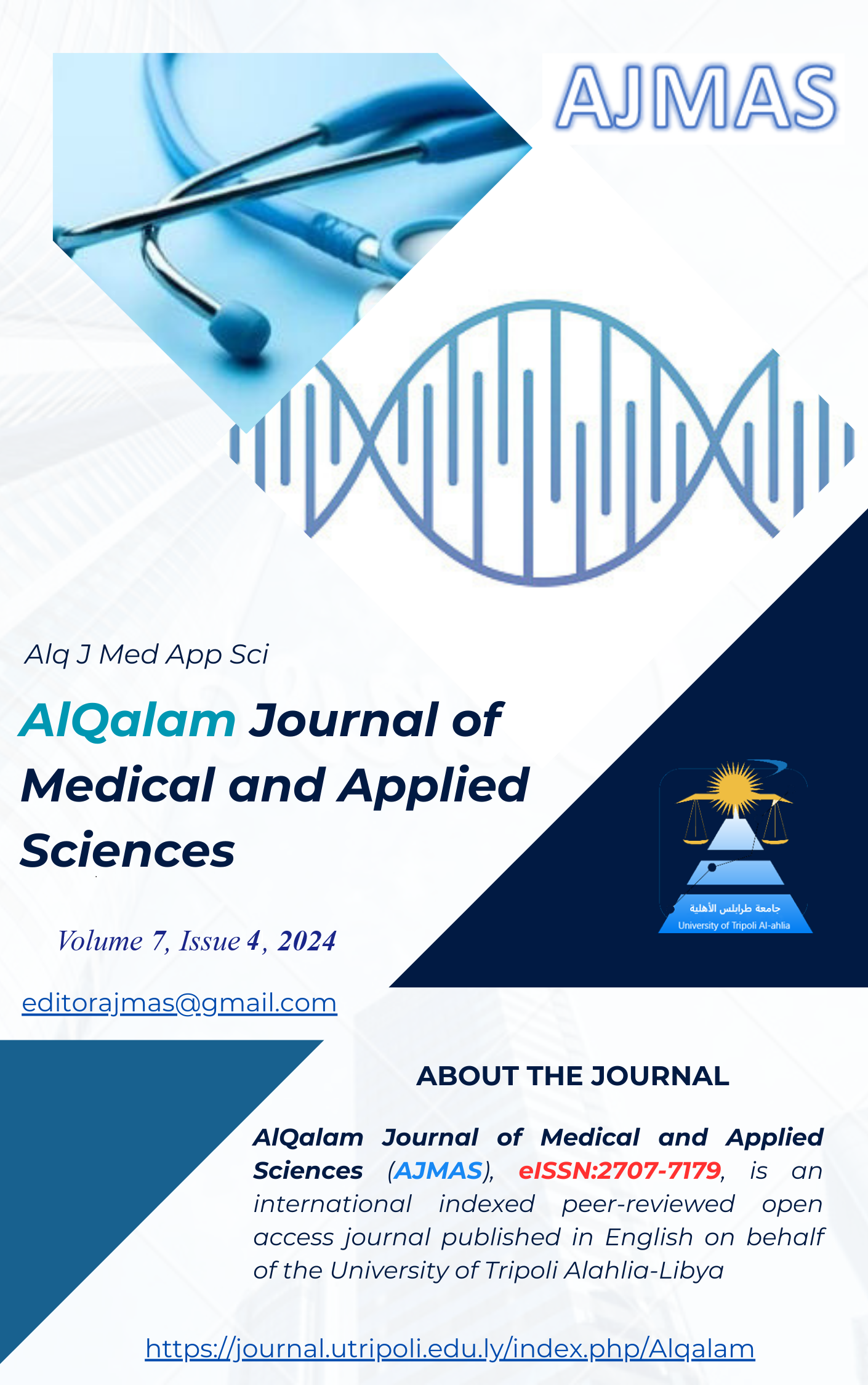Comparative Evaluation of Microhardness between Monolithic and Multilayered Zirconia: An in-vitro Study in Prosthodontic
DOI:
https://doi.org/10.54361/ajmas.247496Abstract
This study aimed to evaluate and compare the microhardness of monolithic zirconia and multilayered zirconia to investigate the influence of material composition and structural design on their mechanical properties. Cylindrical specimens were designed using AutoCAD software and fabricated from monolithic zirconia (Group A) and multilayered zirconia (Group B blocks via CAD/CAM milling systems. The specimens were sectioned into discs with a diameter of 10 mm and a thickness of 1.5 mm. Microhardness testing was performed on these discs using a standardized protocol. Statistical analysis was conducted using a student’s t-test (P < 0.05) with a sample size of 10 specimens per group to ensure 80% power and 95% confidence. Results revealed significant differences in microhardness between monolithic and multilayered zirconia. Monolithic zirconia exhibited superior hardness, attributable to its single-layered structure, which enhances its mechanical strength and wear resistance. In contrast, multilayered zirconia, while exhibiting lower microhardness, demonstrated esthetic advantages due to its gradient layering and maintained sufficient durability for clinical use. The findings underscore the impact of zirconia composition and structural design on mechanical properties, providing clinicians with valuable insights for material selection. While monolithic zirconia is ideal for high-load posterior restorations, multilayered zirconia offers an esthetic solution with adequate mechanical performance, making it suitable for anterior applications.
أصبحت السيراميك المصنوعة من الزركونيا جزءًا أساسيًا في طب الأسنان الترميمي، نظرًا لخصائصها الميكانيكية الممتازة، والتوافق الحيوي، والجمالية. تركز هذه الدراسة على نوعين بارزين من الزركونيا: الزركونيا الأحادية الطبقة والزركونيا متعددة الطبقات، حيث يتمتع كل منهما بخصائص هيكلية ووظيفية مميزة. الزركونيا الأحادية الطبقة (المجموعة أ)، وهي مادة مكونة من طبقة واحدة، معروفة بقوتها الكبيرة في التحمل وكفاءتها في مقاومة الكسر، مما يجعلها مثالية لترميمات الأضراس ذات التحميل العالي. ومع ذلك، فإن شفافيتها المحدودة تمثل تحديًا لاستخدامها في المناطق الأمامية. في المقابل، تتميز الزركونيا متعددة الطبقات (المجموعة ب) بطبقات متدرجة تتراوح من منطقة العنق إلى الأطراف، مما يعزز الجمالية مع الحفاظ على الأداء الميكانيكي. ومع ذلك، تثير التركيبة متعددة الطبقات بعض القلق بشأن التغيرات المحتملة في الصلابة الدقيقة واستقرار المواد الميكانيكي. في هذه الدراسة، تم تصميم عينات أسطوانية باستخدام برنامج AutoCAD وتصنيعها من كتل الزركونيا الأحادية والمتعددة الطبقات عبر أنظمة الطحن باستخدام الكمبيوتر (CAD/CAM). تم تقطيع العينات إلى أقراص (قطر 10 مم، سمك 1.5 مم) لاختبار الصلابة الدقيقة. تم إجراء التحليل الإحصائي باستخدام اختبار t للعينات المستقلة (P < 0.05) مع حجم عينة يبلغ 10 عينات لكل مجموعة لضمان قوة إحصائية بنسبة 80% وثقة بنسبة 95%. اظهرت النتائج وجود فروقات ملحوظة في الصلابة الدقيقة بين الزركونيا الأحادية الطبقة والزركونيا متعددة الطبقات، مما يبرز تأثير تركيبة المادة وهيكلها على مقاومة التآكل والمتانة. توفر هذه النتائج للأطباء معلومات حيوية لاختيار المواد المناسبة من الزركونيا لضمان النجاح طويل الأمد في العلاجات الترميمية
Downloads
Published
How to Cite
Issue
Section
License
Copyright (c) 2024 Milad Eshah, Mohamed Zeglam, Sireen Meheshi, Sireen Meheshi

This work is licensed under a Creative Commons Attribution 4.0 International License.















